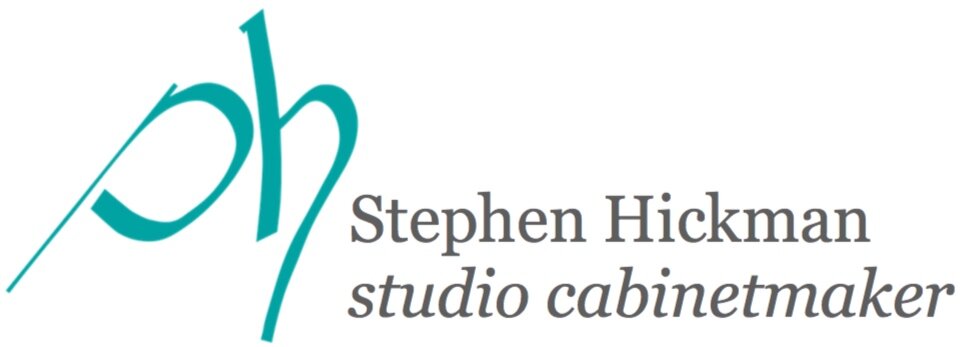An Abstract Process of Design
Saturday 7th October 2023
“What on earth are you doing?” is the more family-friendly version of the question that I was asked by various people walking past, as I stood there, headphones on (a high-tempo drum and bass playist), throwing paint at canvasses, cardboard, old pieces of sheet material - anything I could lay my hands on.
“It’s part of my design process”
“Hmm, looks like a load of Pollocks to me”
“Why thank you, you old flatterer”.
This was not quite how the conversation went, but it’s close enough.
Abstract painting as a part of the design process? Let’s take a step back.
Your woodwork must be exact. If your dimensions are out by any more than perhaps half a mm, or half a degree, then you’ve got a problem. Your work doesn’t fit together properly.
Your technical drawings must be exact. You need an exact plan so that when you make that cut in the timber, you make it in the right place. See above requirements.
But your designs? When you are starting with a blank page and coming up with something brand new - is it useful to be exact?
I would argue…no.
The trouble with exact work is that it requires one’s mind to be in closed mode. There is no room for creativity here.
If my plan requires the end of a board to be cut at 22.5°, and 451mm long, then that it what it must be.
Follow the plans
Hit your numbers
Don’t get sidetracked.
But this exact thinking, this closed mode that we step into to aim for perfection in our woodwork, is exactly the thinking that will keep us stifled in our designs.
Remaining in closed mode means we will trot out the same old tired forms that we have already seen in countless pieces.
Forms we have probably already used, time and again.
This is no judgement on the classics.
Simple modernist designs have been furnishing homes for over a century and I often enjoy using them myself. But if you are seeking something new, something fresh, something exquisite…then where do you go?
To the unknown.
You see, all of those shapes and styles are firmly rooted in what we know. In order to find something new, you should explore a little of the unknown, by turning off your conscious mind. Discover what shapes and forms might be lurking within.
Free yourself up a little.
Throw some paint at a surface.
Don’t think, just paint. Move your arms, your hands. Try different colours, different tools. Paint a surface and then put it down and immediately pick up another.
At the start, you might well find it hard. Your rational mind will be arguing, complaining, not seeing the point, judging your work or trying to make the next piece “look like something good”. But…stick at it. After an hour or so, your conscious, judgemental mind will just sort of give up.
This is when you start to get into flow. You might even start to produce work that you actually like the look of. You’ll certainly start to feel a freedom that comes with relaxing the rational mind perhaps for the first time in years.
Anyone around you will think that you’ve lost the plot.
So ignore them.
It really is quite a fascinating look into social conformity. Try doing it In the company of others without explanation and see how they react. People DO NOT like it when someone steps outside of social norms, even if it does them no harm.
It makes them feel uncomfortable.
But this is good. Learn to be ok with other people thinking you’re weird. How else are you going to break new ground?
This is the process of freeing your mind to design something a bit fresher.
Or perhaps it’s just a load of old pollocks.
Stay sharp friends,
~sh
